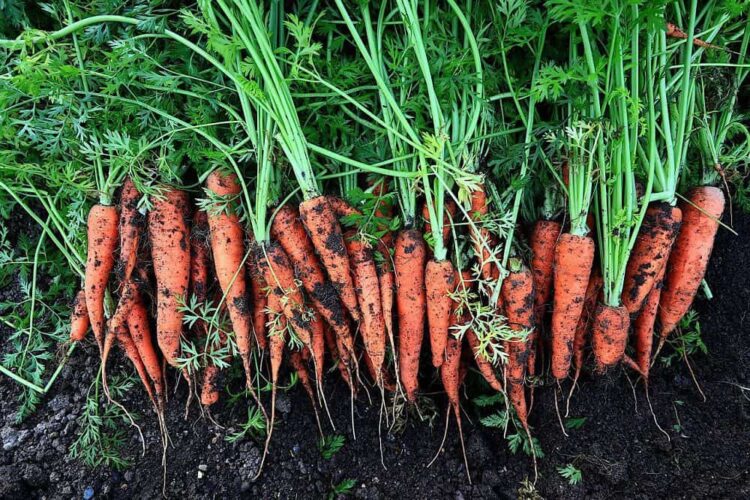Table of Contents
Stick insects are considered among the ‘exotic’ creatures you could keep, yet their diet is anything but! Most species of this fascinating creature are quite humble when it comes to their diet, which makes them all the easier to take care of. Typically, the dietary specifics of a stick insect are determined by its species and geographic origin. There are over three thousand species of stick insect found in all continents of the world (apart from Antarctica), all of which are partial to certain plants and their leaves.
Stick insects would not naturally eat carrot in their natural habitat. Indeed, a stick insect would never come across carrots in the wild (don’t forget that carrots are root vegetables; hence they grow underground). This is not to say you couldn’t try it; they will simply ignore it if it’s not to their liking.
There are, however, certain plant leaves that a good majority of stick insect species enjoy feeding on, namely bramble and privet
and privet plant leaves. Of course, there are many other plants that readily serve as a food source for stick insects including the leaves of hazel, rose
plant leaves. Of course, there are many other plants that readily serve as a food source for stick insects including the leaves of hazel, rose , oak and ivy
, oak and ivy plants (ivy is not recommended for stick insect nymphs though as this plant’s leaves are somewhat tougher and only adult specimens can actually chew and tear off pieces off).
plants (ivy is not recommended for stick insect nymphs though as this plant’s leaves are somewhat tougher and only adult specimens can actually chew and tear off pieces off).
For more advice and information on keeping and looking after stick insects, check out my ebook on Amazon click here
(opens in a new tab).

How About a Fruit and Veg Diet?
Stick insects do not generally feed on fruits and vegetables as neither of these are part of their natural diet in the wild. Having said that, there are always exceptions to the rule and in some instances a stick insect might entertain the thought of a fruit meal.
and vegetables as neither of these are part of their natural diet in the wild. Having said that, there are always exceptions to the rule and in some instances a stick insect might entertain the thought of a fruit meal.
Diet Experimentation – It’s Okay
If you wish to experiment with your stick insect’s diet, know that it is quite possible and very doable. Experimenting with a stick insect’s diet is generally safe and will not cause any problems as the insect is protected by one of its natural self-preservation mechanisms (which is an extremely demanding palette). A stick insect will not consume any leaves or other plant matter that it considers toxic, unknown, or otherwise harmful and unusual to its natural diet. This means that experimenting with diet choices is a risk-free exercise.
or other plant matter that it considers toxic, unknown, or otherwise harmful and unusual to its natural diet. This means that experimenting with diet choices is a risk-free exercise.
On occasion stick insect keepers have varied the daily leaf feed with fruits such as berries and apples, although there are no notable instances of the insect actually feeding on fruit and vegetables (including root vegetables like carrots). The easiest and most unobtrusive way to check if a stick insect will feed on a specific plant (fruit or vegetable, if that’s the aim of the experiment) is to combine the experimental food with the usual selection of leaves. Most of the time though the insect will eat the leaves it finds appealing and simply ignore any bits of fruit and veg or other plant matter it finds unattractive.
Some Feeding Tips to Consider
Stick insects are delicate creatures and care must be taken in order to feed them properly. First and foremost, the leaves they feed on must be fresh, clean, and free of toxins like herbicides, pesticides, and fertilizers. When picking leaves for stick insects, it is best to use sources away from roads, factories, and farms. It is a good idea to get stick insects into the habit of eating evergreen plant leaves such as privet and bramble as this would make feeding quite easy, even during the cold months of the year when other plants are not producing leaves.

